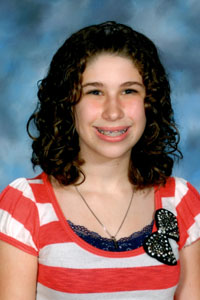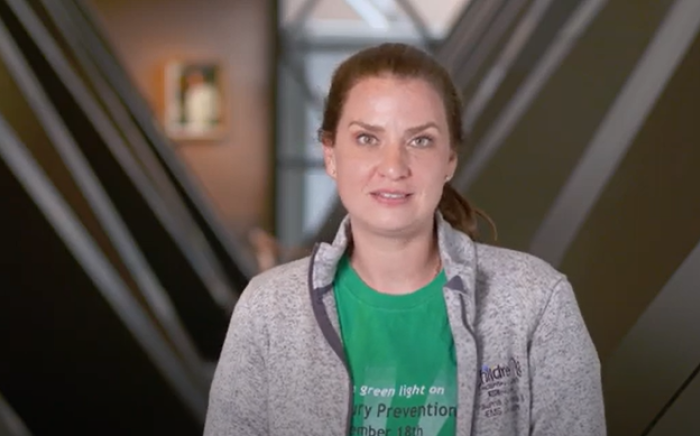 Just about any parent would gladly trade places with their sick child – anything to make them feel better. That’s how Leah Gleason wound up a patient herself, in a room at Barnes-Jewish Hospital. She was on standby to donate part of her liver to then five-year-old daughter Lucie.
Just about any parent would gladly trade places with their sick child – anything to make them feel better. That’s how Leah Gleason wound up a patient herself, in a room at Barnes-Jewish Hospital. She was on standby to donate part of her liver to then five-year-old daughter Lucie.
This story began several weeks earlier when Lucie ran a 103 degree fever that wouldn’t go away. "They tested her for everything—strep, mono, you name it—but no one could figure out what was wrong with her," says Leah. "On the tenth day of the fever, I noticed that her abdomen was bloated, so our doctor told us to head straight to St. Louis Children’s Hospital."
Within five hours, doctors found a mass on Lucie’s liver. A biopsy revealed an undifferentiated embryonal sarcoma of the liver, a very rare tumor that had likely been present since Lucie’s birth. "It was very large—about the size of a child’s toy Nerf football," says Leah. "Lucie started chemotherapy right away. She was so sick. The side effects were pretty awful. The plan was to shrink the tumor, and then surgically remove it. However, after three weeks we found out the tumor had grown even larger. "
In spite of this alarming news, the family held out hope for their daughter’s recovery. "We were so lucky to live in the same city as one of the top children’s hospitals in the United States, St. Louis Children’s Hospital," says Leah. "It seemed like every time we got some bad news, something else would turn around and fall together in a good way. We knew we were at the right place at the right time."
The first such turnaround occurred when the medical director of the pediatric liver transplant program at St. Louis Children’s Hospital advised against partial resection of the tumor. He had seen a similar case earlier in his career, and recommended a different course of action for Lucie: complete removal of both the tumor and her liver, followed by transplantation of a donor liver.
Both of Lucie’s parents were willing to give a part of their own livers to save her life. "Living donor liver transplant involves taking a portion (about 1/3) of a healthy adult liver –usually from a parent, but sometimes from another family member or family friend—and transplanting it into the child," says Michelle Nadler, St. Louis Children’s Hospital Pediatric Liver Transplant Nurse Practitioner. "In the adult donor, the liver will regenerate within a few months back to its normal size. In the transplant recipient, the liver will continue to grow with the child. By the time he or she has reached adulthood, the liver will be adult sized too."
Leah’s test results revealed she was a suitable match. So on July 31, 2003, she was admitted to Barnes-Jewish Hospital to prepare for surgery. "Just as I went into the hospital, the second turnaround occurred," says Leah. "Dr. Jeffery Lowell, surgical director of the transplant program, gave us some incredible news. They had a deceased donor liver that might be a match. This was the best case scenario, and we were so grateful that this family had been open to organ donation. They were about to give so much to so many others."
Leah stayed in the hospital, ready to be whisked away for surgery in the event of a complication. "Fortunately, Lucie’s surgery went off without a hitch. What is even more wonderful is that part of this same liver was transplanted into another woman, saving two lives. She is now Lucie’s ‘liver twin’."
Doctors no longer consider Lucie a cancer patient. She is simply a transplant patient. "The doctors, the donor and his family, and everyone at St. Louis Children’s Hospital are our heroes. Without their previous experience with this rare tumor and surgical expertise, the cancer might have spread, and we would have had a completely different outcome. Instead, everything fell into place."
Lucie is now a happy, healthy twelve-year-old girl. She loves school, enjoys scouting and spends her free time swimming and on horseback. "Our hope for Lucie is that this story just becomes a ‘blip on her radar screen’—and so far, so good. Of course she will require monitoring and medication for the rest of her life, but it sure beats the alternative. The transplant saved her life."












